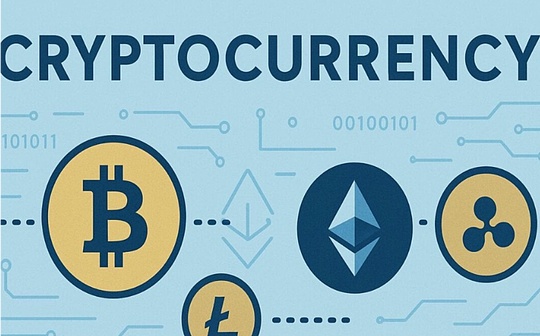
Author: Mask
Web3Technology is centered on blockchain and is reshaping the global financial, social and business ecosystem through innovative models such as decentralization, smart contracts and crypto assets.With the rapid development of this field, the financial risks, data security challenges and legal gaps it brings has prompted regulatory agencies in various countries to actively intervene.The United States, the European Union, Singapore and Hong Kong as the worldWeb3The key hubs of development have each built distinctive regulatory frameworks.
This article will conduct in-depth analysis of the four major jurisdictions from the perspectives of regulatory agencies, policy frameworks, core rules and market impact.Web3Regulatory policies reveal their commonalities and differences, and explore the future direction of global regulatory coordination.
USA
Under the Securities Law“Law enforcement first“model
1. Multiple regulatory system and policy trends
The United StatesWeb3The regulation is typical“Long supervision“Features, involving the Securities and Exchange Commission(SEC)Commodity Futures Trading Committee(CFTC), Financial Crime Law Enforcement Bureau(FinCEN)and other federal agencies, as well as state regulators.
After Trump took office on January 20, 2025, he appointed Mark T. Uyeda as acting chairman of the SEC and Caroline Pham as acting chairman of the CFTC, aiming to provide a more stable and predictable policy environment for the cryptocurrency industry and realize the transition from “to achieve regulation through law enforcement” to “clear regulatory framework.”.
On January 23, 2025, Trump signed the Executive Order to Strengthen the Leadership of the United States in the Field of Digital Financial Technology, aiming to promote the leadership of the United States in the fields of digital assets and financial technology and support the responsible development of the cryptocurrency industry.
The executive order proposes the establishment of the “Presidential Digital Assets Market Working Group” to explore federal regulatory measures for stablecoins and relevant solutions for national digital asset reserves, and explicitly prohibits the establishment, issuance, circulation or use of central bank digital currency (CBDC).

2. Establish strategic Bitcoin reserves
On March 6, 2025, Trump signed the executive order of “Building Strategic Bitcoin Reserves and US Digital Asset Inventory” and held the first cryptocurrency summit at the White House on March 7, indicating that his commitment to building the United States into the “global cryptocurrency capital.”However, on March 7, the price of cryptocurrency continued its recent decline, and the price of Bitcoin fell rapidly, not meeting market expectations.
On January 23, the Senate Banking Committee established a Digital Assets Committee with Senator Cynthia Lummis as chair, which reflects the importance of regulation and development in the cryptocurrency field.
In May 2025, it was reported that the progress of the stablecoin bill and the digitalization process of the US dollar was approaching a turning point.The Trump team may support legal stablecoins (such as USDC) to write into national economic strategies. If implemented, stablecoins will become the “business hub” of the federal government’s digital financial system, rather than a competitor to Bitcoin.
3. State-level supervision characteristics
In addition to the federal level regulatory framework, states have also developed distinctive regulatory models:
• New York StateBitLicenseIt is the most influential crypto asset license, requiring companies to comply with strict consumer protection and anti-money laundering compliance requirements.
• Wyoming adopts a relatively friendly regulatory attitude, recognizing cryptocurrencies as currencies through a series of laws and allowing banks to provide digital asset custody services.
Europe
MiCAA unified regulatory attempt under the framework
1. MiCA: Unified Rules of European Crypto Asset Market
EU passes Crypto Asset Market Supervision Act(MiCA)Become the worldWeb3Regulatory“forerunner“.This one2024The regulations that come into effect in the year set out comprehensive rules for crypto asset issuance and market transactions:
• Classified regulation: Dividing crypto assets into electronic currency tokens(EMT), asset reference token(ART)and practical tokens.Non-fungible tokens(NFT)and central bank digital currency(CBDC)Not hereMiCAWithin the scope of supervision.
• License requirements: Companies that provide crypto asset services must register as crypto asset service providers(VASP), meet capital, reserves and information disclosure requirements.
• Stablecoin special provisions: Set reserve assets, capital requirements and daily liquidity restrictions on stablecoin issuers, especially limiting the use of non-Euro stablecoins in the euro zone.

2. Member States implementation and market response
1. MiCAImplementation of“Dual track system“Transition period:
•Crypto service providers that have operated in the EU have12-18The month’s transition period adapts to the new rules.
• Newly entered the market must comply immediatelyMiCARegulation.
2. The market reaction is polarized:
•Compliant companies welcome the legal certainty brought by unified standards, which makes it easier to27The markets of individual member countries are operated freely.
• Innovative companies are concerned that strict compliance requirements may curb flexibility, especially forDeFiFor projects.
1. Regulatory agencies and legal frameworks
Singapore’sWeb3Regulation by the Financial Authority(MAS)Lead, adopt“Risk grading“and“Sandbox test“Balance mode:
• Core Regulations: Mainly based on the Payment Services Law(PSA)and Securities and Futures Law(SFA)Pay tokens for digital payment(DPT)Classified supervision with securities tokens.
• Regulatory Authority:MASResponsible for license issuance and comprehensive supervision, Accounting and Enterprise Supervision Bureau(ACRA)Responsible for enterprise registration compliance.

two,License system and compliance requirements
Singapore implements classified license management for crypto services:
•DPTService License: Applicable to wallet services, exchanges and custodians, requiring anti-money laundering(AML), capital security and minimum capital regulations.
• Capital Market Service License: For securities token issuance and trading, applicableSFAstrict supervision.
MASA moderately loose exemption period for startups, allowing limited business to be conducted before the requirements are fully met, this progressive regulatory approach attractsCircle,PaxosFamous enterprises have settled.
3. Regulatory dynamics and market impact
1. 2024-2025In 2018, Singapore’s regulation showed a tightening trend:
• Stablecoin regulation:2023The Stablecoin Regulatory Framework requires issuers to meet reserve funds1:1Requirements such as anchoring, independent auditing and daily liquidity.
•DTSPNew regulations:2025Year5moon,MASRelease stricter digital token service providers(DTSP)Regulatory Guidelines,2025Year6moon30There will be no transition period from date, and unlicensed services must be stopped immediately.
2. Despite stricter regulation, Singapore is still the most attractive in AsiaWeb3One of the centers, its advantages are:
• The legal framework is clear and predictable
• Regulators maintain constructive dialogue with the industry
•Excellent geographical location, radiating to the ASEAN market
Hongkong
from“Gray area“Transformation to compliance testing field
The Financial Secretary of the Hong Kong Special Administrative Region Government, Chan Mo-po, has been on many occasionsWeb3It made an important speech, reflecting that Hong Kong is promotingWeb3Positive attitudes and regulatory ideas in development:

2025Year4moon7Day, in “2025HongkongWeb3At the Carnival event, Chan Mo-po said that Hong Kong is committed to promoting the third generation of the Internet (Web3.0) Development, the plan is to maintain fair competition in the market and encourage innovative development through a balanced and innovative regulatory framework.
He pointed out that blockchain technology is showing great potential, which can significantly improve transaction efficiency, reduce costs and enhance market transparency, while blockchain technology is the basis of applicationWeb3.0Development is also accelerating.Hong Kong has always adhered to the principle of “same business, same risks, same supervision” and is committed to development.Web3.0Establish a suitable framework.
Chan Mo-po mentioned that Hong Kong is the first virtual asset trading platform in the world (VATP) The Hong Kong Securities and Futures Commission has issued the region where a clear licensing system has been established so far10indivualVATPlicense;2024Hong Kong is the first to approve virtual assets spot in 2019ETF(i.e., exchange-traded funds), making Hong Kong the largest virtual asset in the Asia-Pacific regionETFThe market builds a bridge for innovation in traditional finance and cryptocurrency.
1. Evolution of regulatory framework
From Hong KongWeb3Regulation has undergone significant changes:
•2022Years ago: relatively loose“Regulatory vacuum“In the period, it attracted a large number of crypto companies to register.
•2022-2023Year: Adoption of the Virtual Asset Policy Declaration andVASPLicense system, turn“Same business, same risks, same supervision“in principle.
•2024Year to date: Fully implement the licensing system and establish global compliance standards.
2. Core regulatory measures
1. Hong Kong adopts a multi-institutional collaborative supervision model:
•SFC: Responsible for the virtual asset trading platform(VATP)Licensing and securities token regulation.
•HKMA: Participate in the supervision of stablecoins and payment-related services.
2. Key regulatory requirements include:
•License system: AllVATPMust be obtainedSFCIssued1Number(Securities Trading)and7Number(Automated trading services)license.
• Asset custody: requires the custody of customer assets through a wholly-owned subsidiary to obtainTCSPlicense.
• Investor protection: Currently, only professional investors are allowed to participate in securities token trading, and retail investors protection is achieved through restricted access.
3. Market development and policy support
1, Hong Kong has enhanced its competitiveness through a number of measures:
•2024Approved in spot of virtual assetsETF, becoming the largest virtual asset in the Asia-Pacific regionETFmarket.
•20251999 Policy Declaration: Plans to expand regulatory frameworks, which may include clearer stablecoin rules.
2. Hong Kong’s advantages lies in:
•Capital and talent advantages brought by the status of an international financial center
• Potential connection opportunities with the Mainland market
• Clear regulatory expectations and legal certainty
1. Differences in regulatory philosophies

2. Comparison of regulatory in specific fields
1. Stablecoin supervision:
•United States: May relax regulation and focus on payment functions
• EU: Strict capital and reserve requirements, restrict non-Euro stablecoins
• Singapore:1:1Anchor requirements, independent audits and daily liquidity
• Hong Kong: Reserve100%Bank custody, implement the license system within the year
2. Securities tokens:
•United States: Securities law strictly applies, registration or exemption is required
• EU:ARTTokens applyMiCA, other securities tokens follow the securities law
• Singapore: ApplicableSFA, but there is a small issuance waiver
• Hong Kong: Disclosure of asset ownership and smart contract risks
3. Decentralized applications:
•United States: High pressure regulation, strict law enforcement
• EU:MiCARetain some exemption space
• Singapore: Sandbox mechanism support trial
• Hong Kong: Regulatory framework has not been clarified and may be includedVASPcategory
In the future, with the development of emerging issues such as real asset tokenization (RWA) and on-chain privacy, global regulatory coordination will become more important.Regulators across countries need to find a dynamic balance between protecting the financial system and maintaining technological vitality, while industry players need to develop adaptive strategies in a complex and changeable regulatory environment.The future of Web3 depends not only on technological innovation, but also on regulatory wisdom. Only by exploring feasible models within the framework of rules can this revolutionary technology realize its potential for change.








